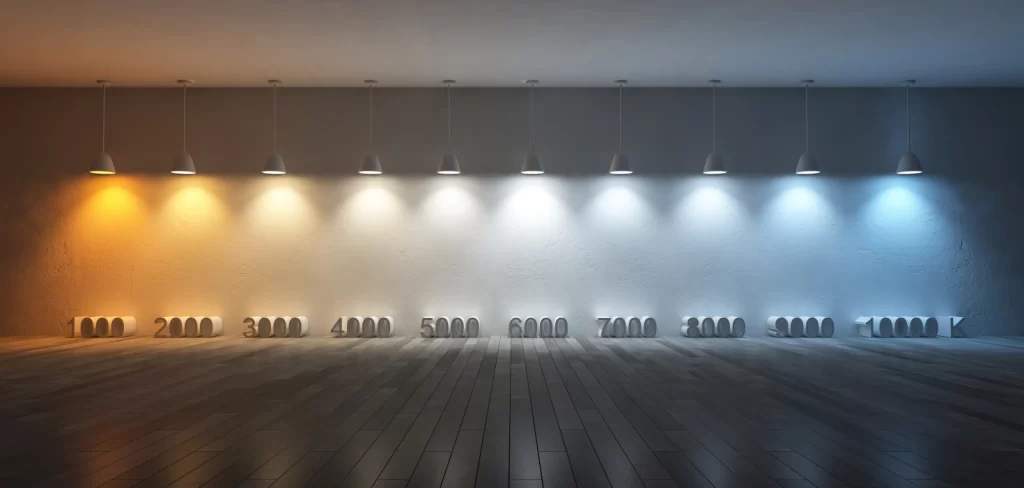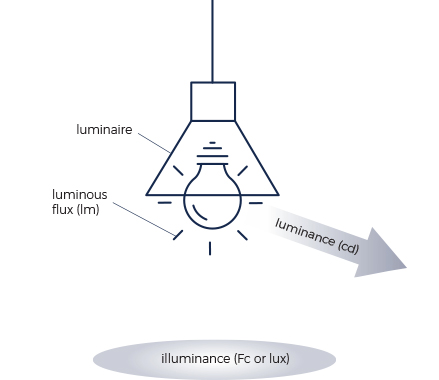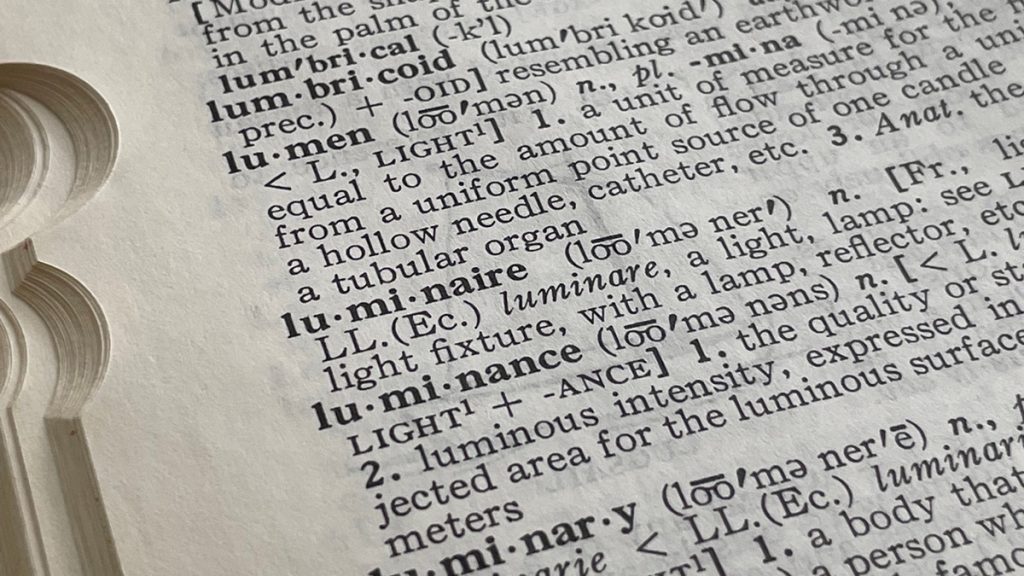As any architect or designer can tell you, lighting has its own lingo and terminology. So we’ve put together this glossary of basic lighting terms for you to access any time you need to differentiate a lux from a lumen or decipher the difference between a light source’s CRI and CCT.
Ampere (Amp): The basic unit of measurement for electrical current, representing the amount of electric charge in motion.
Candela (cd): In simple terms, a candela is a unit of measurement that describes the amount of light emitted in a particular direction. The candela was initially rooted in the concept of the illuminance of a standard wax candle.
Color Rendering Index (CRI): A measurement of how accurate (or “true”) a light source makes the color of an object appear. CRI is measured on a scale of 0-100. The higher the CRI, the better the color rendering ability of a light source.

Correlated Color Temperature (CCT): A description of the color appearance of the light a luminaire produces—in terms of warm (yellow) or cool (blue). CCT is measured in terms of temperature using the Kelvin scale.

Efficacy (or Luminous Efficacy): A measure of how effectively a light fixture converts electric power into visible light. Measured in lumens per watt (Lm/W). This concept is more useful in lighting design than considering watts alone since lighting output is better described in lumens.
Flicker: Rapid, repeated changes in the brightness intensity produced by a luminaire.
Footcandle (Fc): The imperial equivalent to lux, this measurement unit describes the illuminance measured per unit of area. One footcandle is equal to one lumen per square foot.
Glare: The presence of high luminance (bright lighting) caused by insufficiently shielded light sources in the field of view or reflected sources of excessively bright light.
Illuminance: The amount of light that falls on a surface, measured in footcandles (Fc).
Illumination: The use of lighting to achieve practical or aesthetic effects.
Kelvin (or degrees Kelvin): A unit of measurement describing the hue of the light emitted from a specific light source. The higher the Kelvin value, the bluer the light appears. The lower the Kelvin value, the more yellow/amber the light appears. See also Correlated Color Temperature.
Lumen (lm): A unit of measure of the total light emitted per second from a luminous source. In simpler terms, it measures the amount of brightness coming from a light source; the higher the number of lumens, the brighter the light.
Luminaire: A complete electric light unit; also referred to as a light fixture.
Luminance: The brightness of a surface or object when viewed from a particular angle, measured in candelas per unit area (square feet or square meters).
Luminous Flux: A measure of the energy released from a source in the form of visible light. Measured in lumens.
Lux: The metric equivalent to footcandle, this unit of measurement is used to describe the illuminance measured per area unit. One lux is equal to one lumen per square meter.
Watt: A unit of power that measures the amount of energy a luminaire uses. A watt measures the amount of energy a luminaire uses, while the term lumen is a better way to describe brightness.

Is there a term you’d like us to add to the list? Let us know by leaving a reply!

